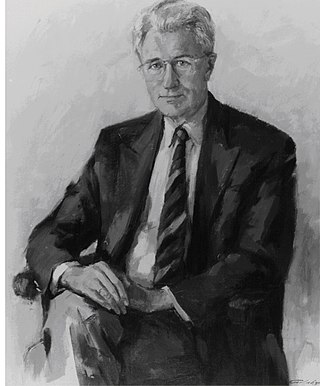Related Research Articles
Brittonia is a quarterly, peer-reviewed botanical journal, publishing articles on plants, fungi, algae, and lichens. Published since 1931, it is named after the botanist Nathaniel Lord Britton. Since 2007, the journal has been published by Springer on behalf of the New York Botanical Garden Press, the New York Botanical Garden's publishing program. The current subtitle is: "A Journal of Systematic Botany". Currently, the journal is published quarterly, in both a paper and an online version. The editor-in-chief is Benjamin M. Torke.

William Gilson Farlow was an American botanist, born in Boston, Massachusetts, and educated at Harvard, where, after several years of European study, he became adjunct professor of botany in 1874 and professor of cryptogamic botany in 1879.
Neocussonia is a genus of flowering plants belonging to the family Araliaceae.

I. M. Johnston, was a United States botanist. He studied at Pomona College in Claremont, California and at Harvard University. His plant collections are housed in the Rancho Santa Ana Botanic Garden, in Claremont, and also in the Gray Herbarium of Harvard University.
Hugh Miller Raup was an American botanist, ecologist and geographer working on natural history and natural resource management in diverse regions—from tropical and temperate to arctic.

Cornelis Kalkman was a Dutch botanist.

Edward Yataro Hosaka was an American botanist who specialized in identifying plants of the Hawaiian Islands. His 1935 University of Hawaiʻi at Mānoa masters thesis was entitled 'A Floristic and Ecological Study of Kipapa Gulch'. He authored Sport Fishing in Hawaii published in 1944 which was republished in 1973 as Shore Fishing in Hawaii. In 2024, a biography of Edward Hosaka was published by the Bishop Museum Occasional Papers.
Fred Alexander Barkley (1908–1989) was an American botanist. Barkley studied at the University of Oklahoma and was awarded a PhD from the Washington University in St. Louis in 1937.
Willem Vink is a Dutch botanist.
N. Sasidharan is an Indian botanist.
David John de Laubenfels or D. J. de Laubenfels was an American botanist known as an expert on tropical conifers.
Barbara Lynette Rye is an Australian botanist born in 1952.
Hellmut R. Toelken is a South Australian botanist. He retired in December 2008 from the position of senior biologist at the State Herbarium of South Australia, but remains an honorary research associate. Earlier he was with the Botanical Research Institute, Department of Agricultural Technical Services, Pretoria, S Africa.
Jun Wen is an evolutionary biologist and curator at the Smithsonian's National Museum of Natural History in the Department of Botany and has worked in the Laboratory of Molecular Systematics. She researches the monography, phylogenetics, biogeography, and ethnobotany of the plant families Araliaceae and Vitaceae. She has published over 190 scientific papers.
Lindy Webster Cayzer CF is an Australian botanist.
William Franklin Wight was an American botanist. Wight studied at Michigan State College and Stanford University.
James Henderson Ross is an Australian botanist.
Sijfert Hendrik Koorders was a Dutch botanist, who worked primarily on the flora of Java.
David Gamman Frodin was an American botanist, known as a leading expert on the flora of Papua New Guinea.
References
- ↑ "Gregory M. Plunkett". Virginia Commonwealth University. 8 November 2007. Retrieved 18 February 2014.
- ↑ "Index of Botanists - Plunkett, Gregory M." Harvard University Herbaria . Harvard University . Retrieved 18 February 2014.
- ↑ International Plant Names Index. G.M.Plunkett.